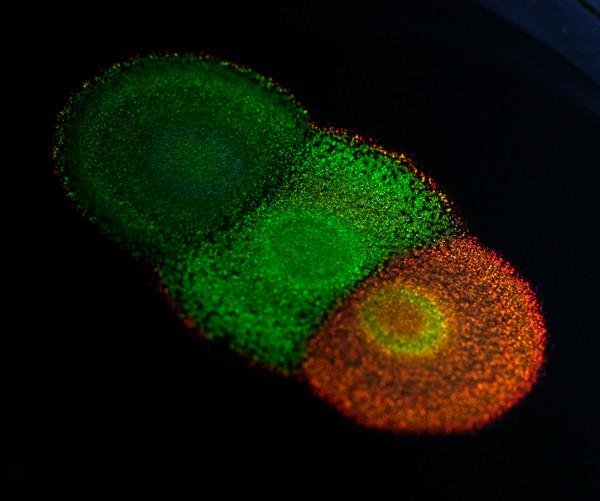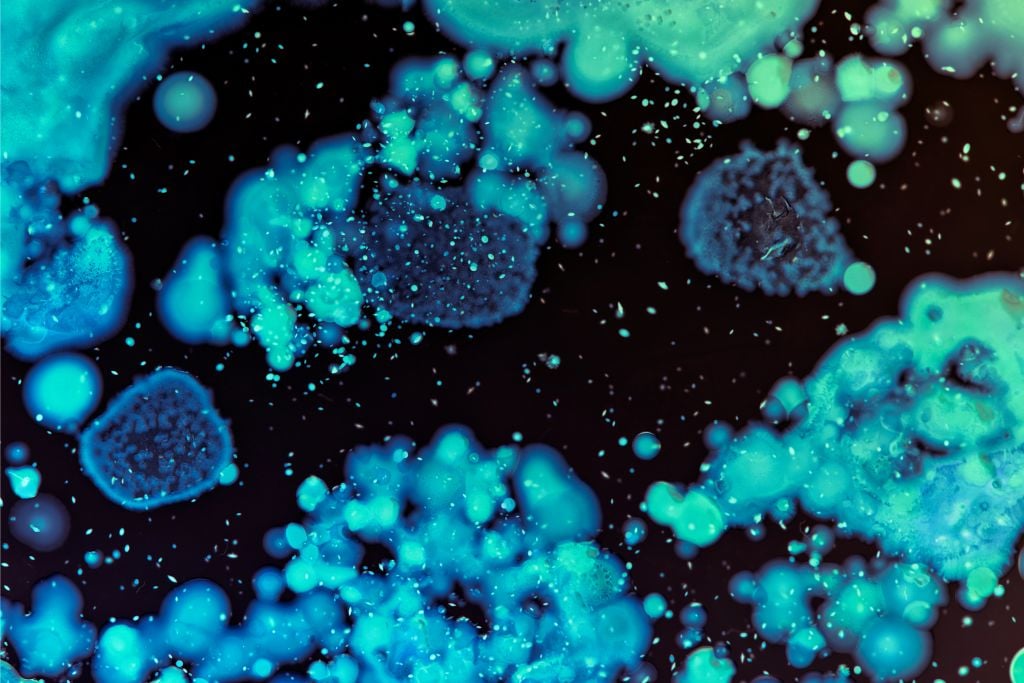Researchers in the UK and the Netherlands have unlocked the genetic code that changes the color of certain bacteria. The discovery could lead to large-scale manufacturing of biodegradable, non-toxic paint.
In a collaborative study between the University of Cambridge and the Dutch company Hoekmine, researchers compared the genetic information of certain bacterial colonies to their optical and anatomical properties. The study, published in PNAS, is the first to investigate the genetics of structural colors in any living system.
Flavobacteria, the bacteria used for the study, form colonies of metallic colors created by their internal structure, which reflects light at certain wavelengths, as opposed to containing a pigment. This property can be used to create photonic structures out of living tissue on a large scale in a any desired color. By genetically changing the flavobacteria’s shape and motility, researchers changed their color from metallic green to blue and red across the visible spectrum.
Dr Silvia Vignolini from the Cambridge’s Department of Chemistry, a co-author on the study, remarks this could allow the development of “changing coloration under external stimuli and that can interface with other living tissues” and adapt to changing environments.

The results of the study will be particularly useful to Hoekmine, a biotechnology company based in Utrecht, the Netherlands, that specializes in research into how complex microbial structures can be used to derive new optical materials and compounds with commercial potential.
Creating pigments from biological systems could provide sustainable alternatives to petrochemical dyes. Moreover, exploring the creative potential of biological dyes seems to have an entrepeneurial appeal. Algaemy, a Berlin-based company, produces pigments in a wide range of color derived from different microalgae species for textile printing. PILI is a French company that uses biofabrication of a wide range of colors produced by microorganisms as an alternative to petrochemical versions.
If developed further, dyes and pigments created by biological systems may offer an environmentally friendly means of creating different pigments for a range of applications. Moreover, pigments that adapt to the environment may prove to be invaluable to the auto industry and other products that are exposed to changing external conditions and climates. However, it remains to be seen whether the findings from the bench are in fact transferable to a large scale industrial production.
Images by University of Cambridge, Jeroen Fortgens, Shutterstock





